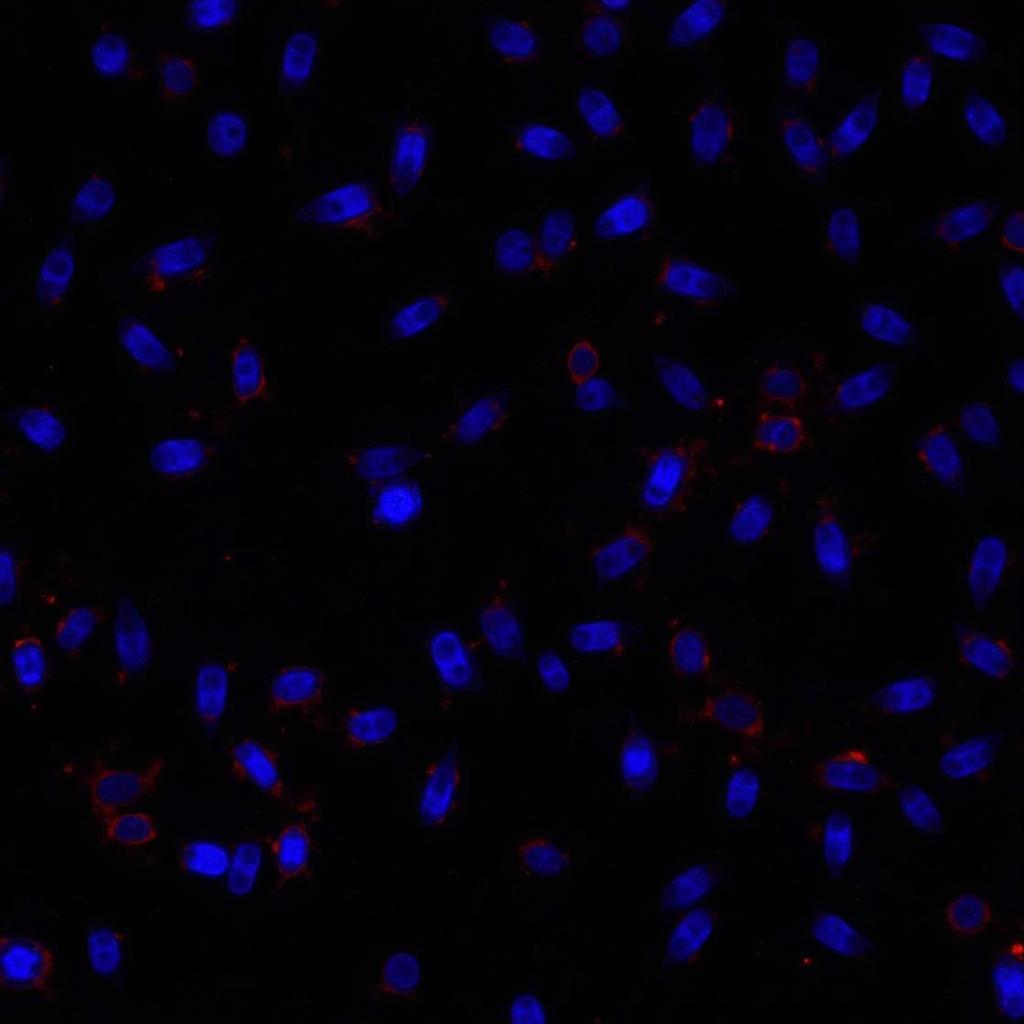Mitochondria, the powerhouses of the cell, are often depicted in textbooks as bean-shaped organelles. But what color are they? The truth is, under a normal light microscope, mitochondria are typically transparent or slightly grayish. Their true color isn’t easily observed without specific staining techniques.
Decoding the Colorless Appearance of Mitochondria
While mitochondria themselves lack a distinct color visible with standard microscopy, their activity and components contribute to the overall cellular hue. These organelles are primarily composed of proteins and lipids, which are generally colorless. The lack of inherent pigment explains why observing them without staining is challenging. Imagine trying to spot a clear glass marble in a bowl of water – it’s almost impossible without altering the light or adding color.
Staining Techniques Reveal Mitochondrial Structure
To visualize mitochondria, scientists use various staining methods. These stains bind to specific components within the mitochondria, allowing researchers to observe their structure and distribution within the cell. Common stains like Janus Green B and Rhodamine 123 selectively stain mitochondria, giving them a distinct color under the microscope. Janus Green B, for instance, stains mitochondria blue-green, while Rhodamine 123 fluoresces green when bound to active mitochondria. These techniques are crucial for studying mitochondrial morphology, function, and even detecting abnormalities. For example, changes in mitochondrial shape or distribution can indicate cellular stress or disease.
 Stained mitochondria under fluorescent microscopy
Stained mitochondria under fluorescent microscopy
Why Knowing the Color Matters Less Than Understanding the Function
While the color of stained mitochondria can be visually striking, the real importance lies in understanding their function. As the primary sites of cellular respiration, mitochondria convert nutrients into ATP, the energy currency of the cell. This process is essential for all cellular activities, from muscle contraction to nerve impulse transmission. Dysfunction in mitochondria can lead to a wide range of diseases, highlighting the importance of studying these vital organelles. You might find it interesting to compare this to what color is the mitochondria.
The Color of Context: Mitochondria in Different Cell Types
The apparent color of mitochondria can also vary depending on the cell type and the surrounding cellular environment. In densely packed cells, they might appear darker due to the surrounding structures. Conversely, in cells with a less dense cytoplasm, they might be more easily distinguishable even without staining. This is similar to how the color of a house can look different depending on the surrounding landscape and lighting.
What Color is Cytoplasm in a Plant Cell?
Just as the color of mitochondria can be tricky, understanding what color is cytoplasm in a plant cell requires careful consideration.
What is the Color of an Animal Cell?
It’s also important to consider the broader context, like understanding what is the color of an animal cell. This provides a wider understanding of cellular structures and their appearance.
Conclusion
While mitochondria themselves are not inherently colorful under normal light microscopy, specialized staining techniques reveal their structure and location. Ultimately, the color achieved through staining is less important than understanding the crucial role mitochondria play in cellular function. Remember, the powerhouses of the cell don’t need a vibrant hue to showcase their importance. This is comparable to understanding what color is a animal cell.
FAQ
- Do mitochondria have a natural color?
- Why are stains used to visualize mitochondria?
- What are some common stains used for mitochondria?
- How does mitochondrial dysfunction affect the body?
- Can the color of mitochondria vary between cell types?
- Why are mitochondria called the “powerhouses” of the cell?
- What is the main function of mitochondria?
For further assistance, contact us at Phone: 0373298888, Email: [email protected] or visit us at 86 Cau Giay, Hanoi. Our customer service team is available 24/7.
